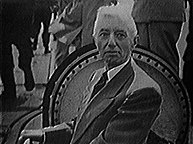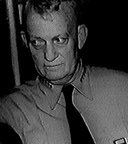A Tender Tale
Chapter 3:
Just what is a "boomer"...
this country can get it's act together
Let me take a time out at this point in the story to fill in some history - to give you some perspective on Submarine Tenders particualarly SSBN Tenders - So I'll digress back a ways - way back -- to say - 1941!
Proteus' keel was laid in 1941 - with World War 2 looming - the US was building up it's fleet - and the Proteus was part of a class of the first modern Submarine Tenders. Starting with the Fulton (AS-11) these ships were being built at a realitively leisurely pace. With the attack on Pearl Harbor - the Fulton, (which was out on shake-down at the time) and the Sperry (AS-12) were hurried up and gotten quickly to the fleet to support our submarines in the Pacific. The remaining 5 ships of the class were reduced in priority while the shipyards turned out other ships important to Naval Operations. Once the initial demand had leveled off - middle of 1942 - the completion of those 5 ships bacame a priority - and so it was that the Proteus wasn't commissioned until 1944 late in the war - but not so late as to not play some very important roles: First she sailed to Pearl Harbor to take up tending the Pacific Sub fleet - as the war progressed - the Proteus advanced with the front - by the end of 1944 - she was tending subs out of Midway. By February 1945 - after a brief re-fit in Pearl - she took up station in Apra Harbor - Guam. In August - she received orders to the ultimate destination of the war - Japan. During the signing of the surrender conducted aboard the Missouri, the Proteus served as the Flag ship for Vice Admiral Lockwood and had the I400 - which at the time was the largest Submarine ever built - tied to her side as a war prize. After the surrender documents were signed - the Proteus served as the Flag Ship of the 30 ship Third Fleet - whose job was to secure the largest Japanese Naval Base at Yokosuka, and several other important installations. In 1947, after returning to New London and servicing subs there for two years - she was de-commissioned - and served as the station ship for the reserve fleet there. In spite of officially being de-commissioned - Proteus was occasionally called on for service during the next 10 years. Because of this - she was still in full fit - and ready to sail.
The Navy - had declared it's submarine fleet obsolete at the end of the war - and had pursued an aggressive engineering program of modernization. The man that drove that program was Hyman Rickover.  |
| Hyman Rickover |
Rickover envisioned using the power of the atom - not as a destroyer - but as a power source - the ideal power source for submarines. The ultimate product of his vision was the Nautilus - and all future nuclear subs - whose only limitation to staying submerged is the crew. With the Nautilus becoming operational in 1955 - the new Chief of Naval operations Arleigh Burke had a vision of his own. The Navy had toyed with combining the German missile technology captured at war's end with an American submarine - but so far the attempts (like Regulas) had been pretty lame.  |
| Arleigh Burke |
Upon assuming the office of CNO - Burke set up a new department "Special Projects" to turn his vision into reality. He chose a flyer named Bill Rayburn. Rayburn had no experience with Submarines nor Missiles. But he did have a drive - and an inspiring quality of leadership - this man was tireless - and got things done. By mid 1956 - he and his team had thrashed out the basics of a completely new and radical concept - A Submarine with 16 large tubes - each loaded with an intercontinental Ballistic Missile - each loaded with a nuclear war head. The Firepower of one boat would exceed that of all the bombs dropped on Europe during WWII. A truly awesome weapon. Even more impressive was the plan to have this weapons system - named Polaris operational in ten years - by 1965.
August 3, 1957. Nautilus was just getting herself settled - she was setting all kinds of sub-merged and surface records. America was feeling pretty good about things. The Soviets announce they have just launched an Inter Continental Ballistic Missile. Though a slight raised eyebrow here and there - America's reaction varies from a yawn to a shrug. Some don't believe it. Most of the rest don't understand the implication. So What? That's over there.
Continued 
© 1997 Common Cents Computers 

